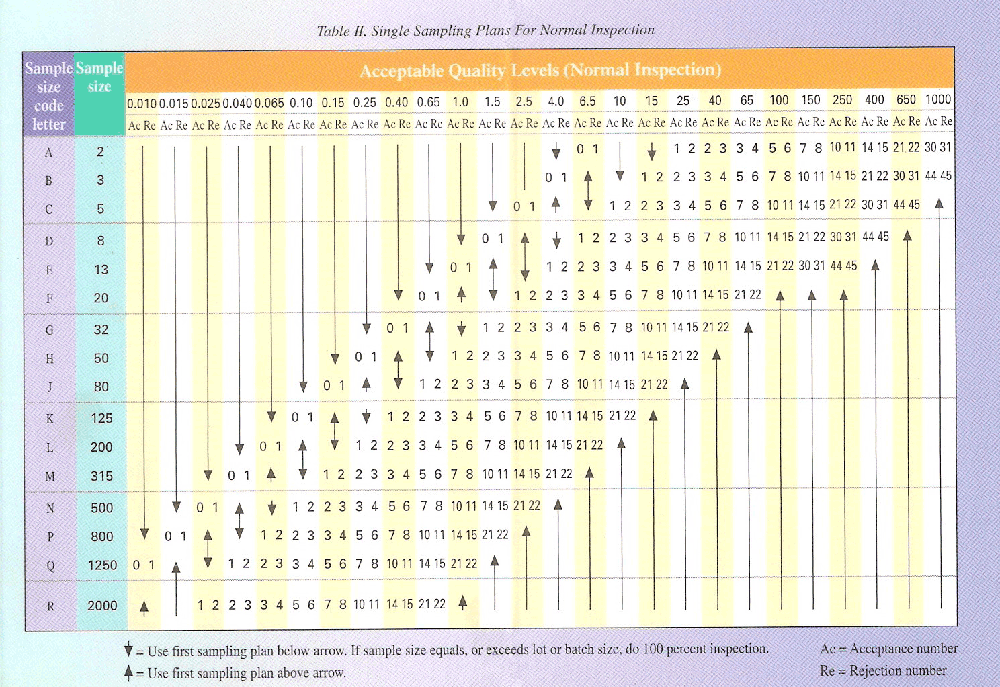We carry out inspection strictly based on AQL standard.
If you have ever reviewed a QC inspection report you have most likely seen the acronym AQL. AQL refers to Acceptable Quality Level, or basically the worst possible quality level that is acceptable for a particular product or service. It is one of the most commonly used tools in QC product inspection. This chart provides a statistically sound and tested control for selecting an inspection sample size, and determining how many defects to allow in that sample. Here's how to use and understand this chart:
1. In Table I, under Lot or Batch Size, find the total quantity of the batch that will be inspected. (i.e. let's say the shipment we are inspecting is 1600 pieces, I would be looking at the row that says "1201 to 3200").

2. Then slide over to the right to find our inspection level, which is also the sample size. There are two sections to the right of Lot or Batch Size: Special Inspection Levels and General Inspection Levels. We will use the more common General Inspection Levels. You'll see that based on our batch size we can choose H (Level I), K (Level II) or L (Level III). We choose K (Level II).
About choosing the inspection level: Here, choosing a higher inspection level (III as opposed to II) would mean that we want to check a larger percentage of the total quantity, and therefore would have a larger sample size. We want a higher inspection level when we have a product that we know generally has a lot of variation throughout the quantity (i.e. 100pcs off the line are just fine, and then one piece can have a critical defect), and also when our product is of higher value. A good example of products for which we use a higher inspection levels are watches and electronics products etc.
3. Now look at Table II and under Sample Size Code Letter go down to "K". You will see that our sample size (the amount of pieces we will check) is 125. Again we slide over to the right to see the different Acceptable Quality Levels, and how they are represented by the number of defects we will allow within the sample size. We select AQL 2.5. In this AQL we see the number 7 under "Ac" and 8 under "Re". This means that we can accept the goods if there are 7 defects in our sample size of 125, but will reject the shipment if there are 8 defects.

About choosing the AQL: Choosing a lower number AQL (such as 0.01 or 0.015) means you are choosing a very strict quality standard, allowing for a low number of defects in your shipment. Choosing a higher number AQL (such as 650 or 1000) means you are choosing a loose quality standard, allowing for more defects. Generally, we choose one AQL for minor defects, and a slightly stricter one for major defects. The most common levels used in checking consumer goods are 1.5 and 2.5 for major defects, and 2.5 and 4.0 for minor defects.




